Physical Address
304 North Cardinal St.
Dorchester Center, MA 02124
Aortic valve replacement is usually required when operative intervention is performed for aortic valve stenosis or incompetence in older patients. Several replacement devices are available, but all operations share a common approach and principles.
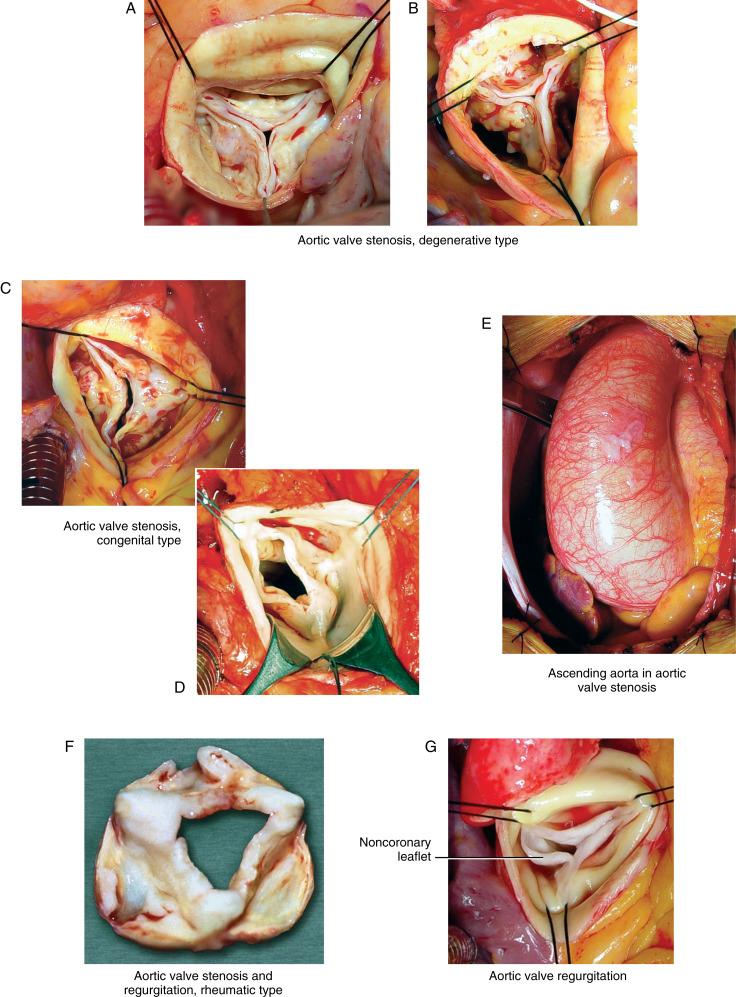
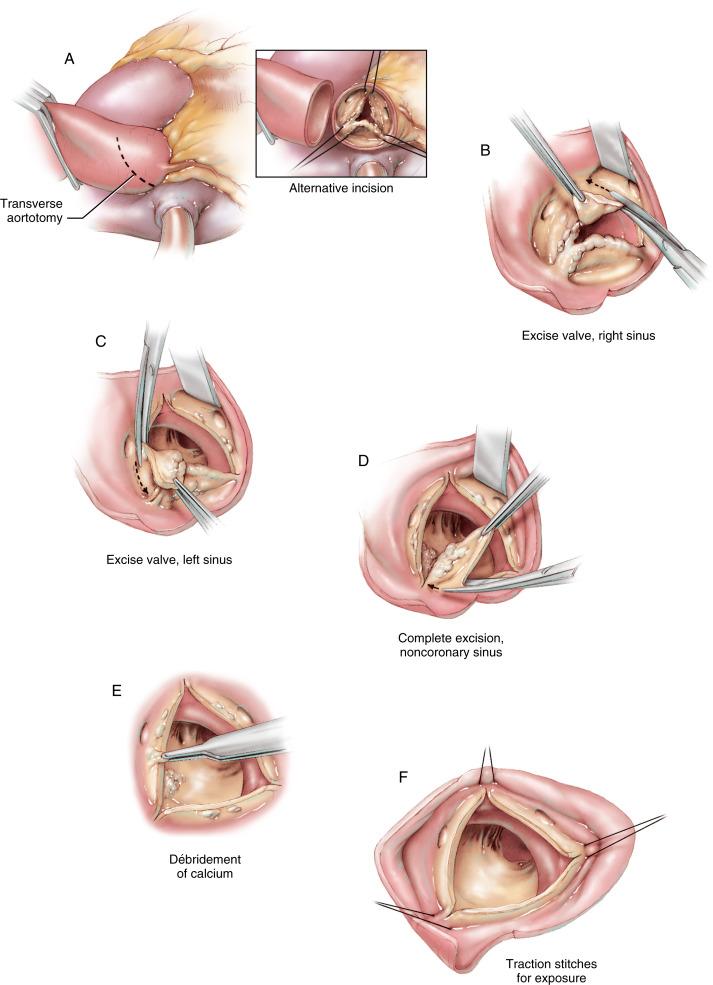
Continuous suture technique for aortic valve replacement has some distinct advantages over the more standard pledget-reinforced mattress suture technique. A larger prosthesis can be accommodated in the aortic outflow tract with the continuous suture technique because the tissues are not compressed, as they are with the mattress suture technique. The tension on each suture can also be adjusted and made uniform with the continuous suture technique. In addition, there are fewer knots, which can act as potential nidi for clot formation.
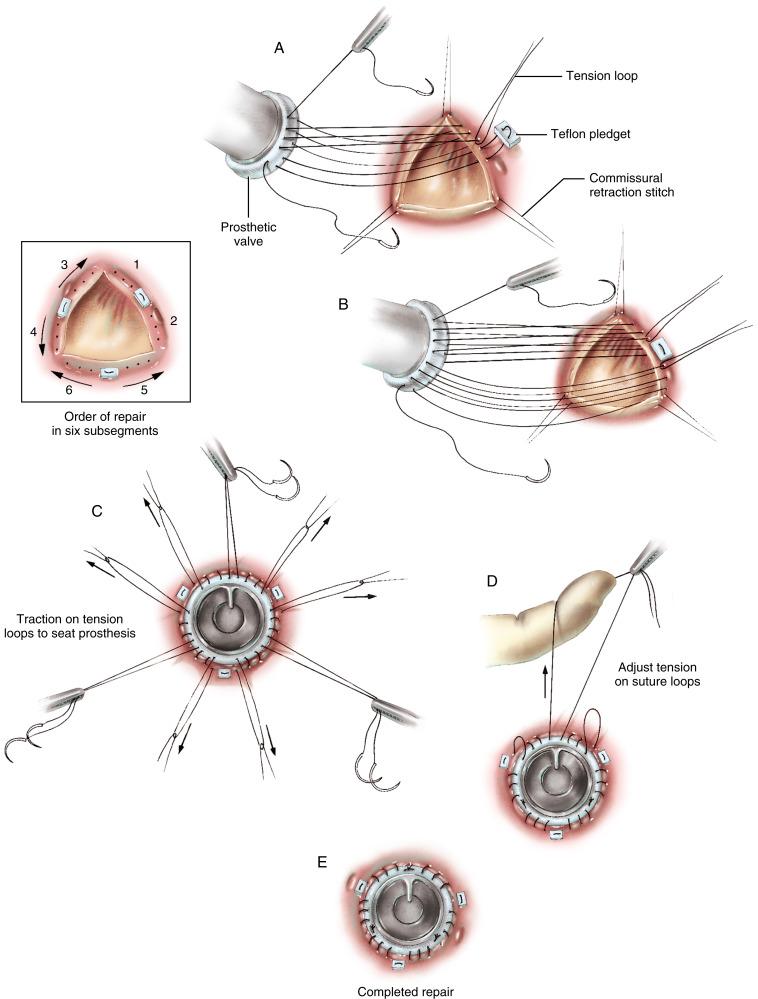
Interrupted suture technique is standard for replacement of the aortic valve. This method offers maximal strength of prosthetic attachment and has the lowest incidence of perivalvular leak.
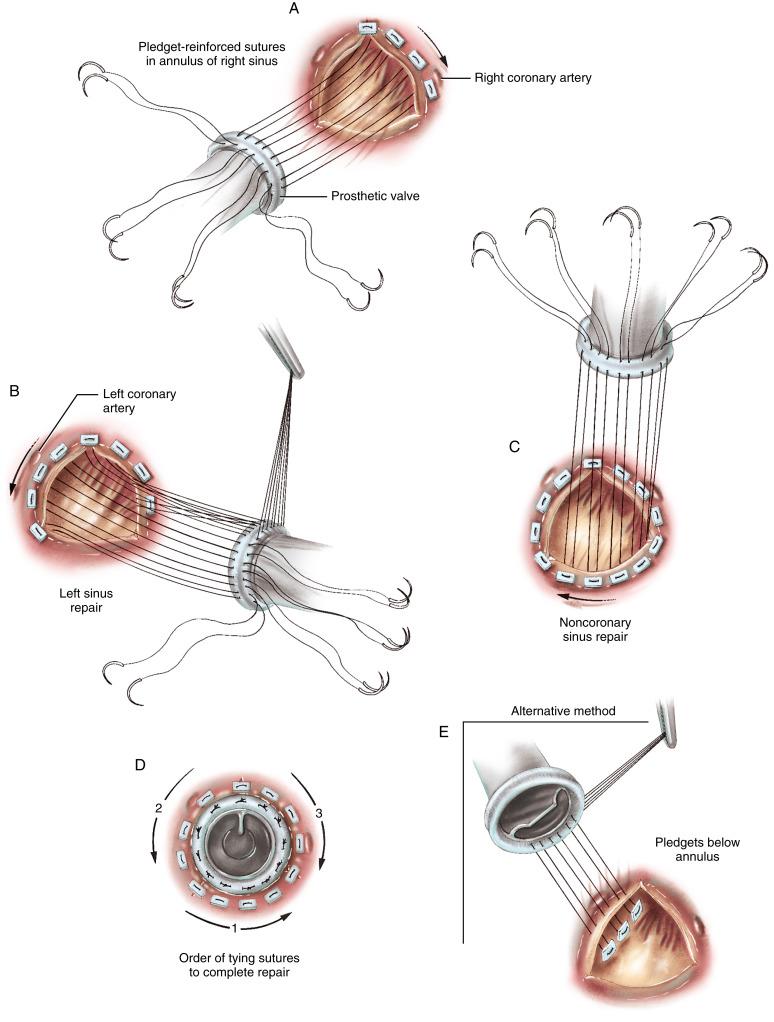
Transplantation of human aortic valves has become possible because of cryopreservation techniques and tissue banking, resulting in the availability of valves of various sizes for aortic surgery. Experience has shown that aortic allograft valves are durable, and their hemodynamic performance is superior to that of any other replacement device currently available. The virtual absence of embolism without the need for anticoagulation makes aortic allografts very attractive, especially in young patients and in those in whom anticoagulants are contraindicated. A clear understanding of the anatomy and geometry of the aortic root is essential because the aortic allograft depends on the host aortic tissues for support. Major deformity of the aortic sinuses should be appreciated and corrected, or the procedure should be abandoned in favor of a conventional valve replacement. The 120-degree rotation technique assumes that there are three symmetrically placed commissures in the host aorta that will support the aortic allograft valve. If there is abnormal commissure formation, asymmetric commissure placement, or sinus abnormality, it is preferable to use another method of allograft implantation that uses more graft aortic wall in the repair to compensate for deficiencies in the host.
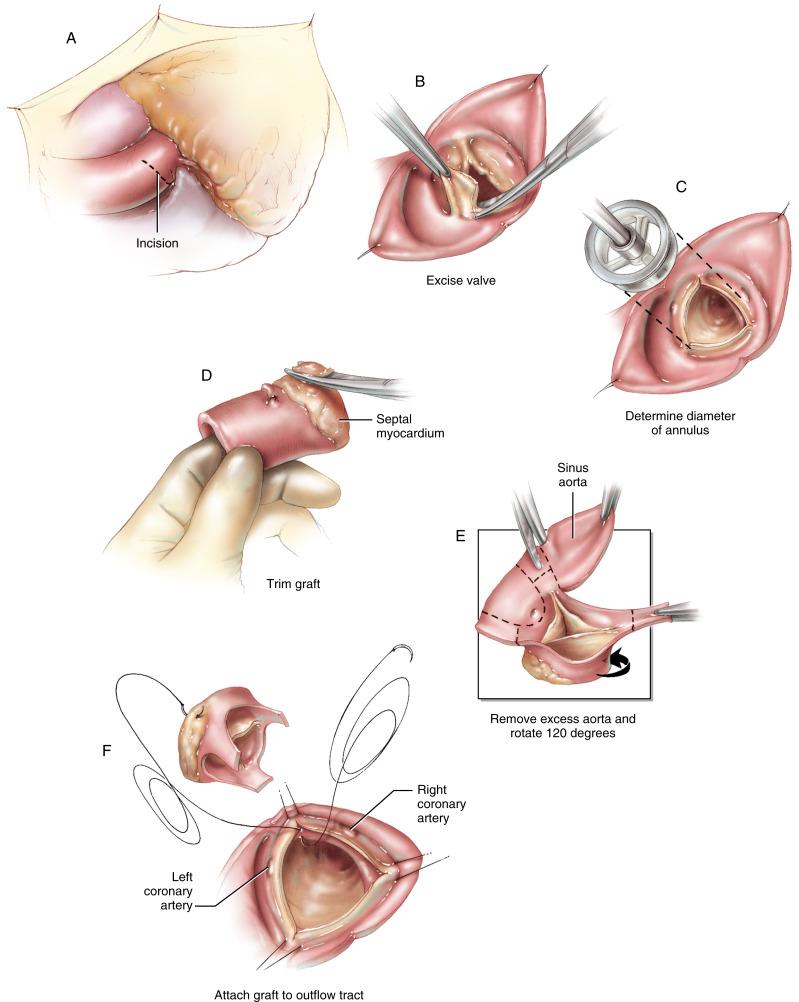
This technique is probably the most useful and reproducible method for replacing the aortic valve with an aortic allograft valve by the “freehand” technique. It is particularly useful in patients with aortic valve incompetence due to leaflet prolapse because this condition is usually caused by deformity and enlargement of the noncoronary sinus of Valsalva. The noncoronary sinus of the graft is not disturbed, so it serves as a substitute for the deformed sinus of the host. Because the sinotubular junction (sinus rim) of the noncoronary sinus of the graft remains intact, two of the commissures of the graft remain in a fixed position. The need to properly position only one commissure of the graft simplifies valve implantation and makes graft valve competence more likely.
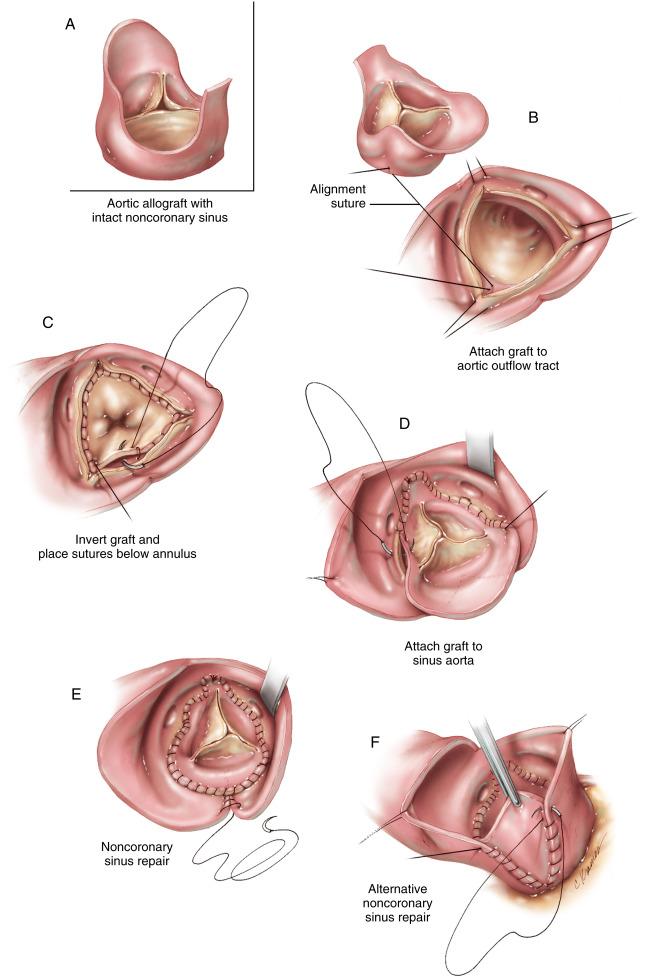
Become a Clinical Tree membership for Full access and enjoy Unlimited articles
If you are a member. Log in here